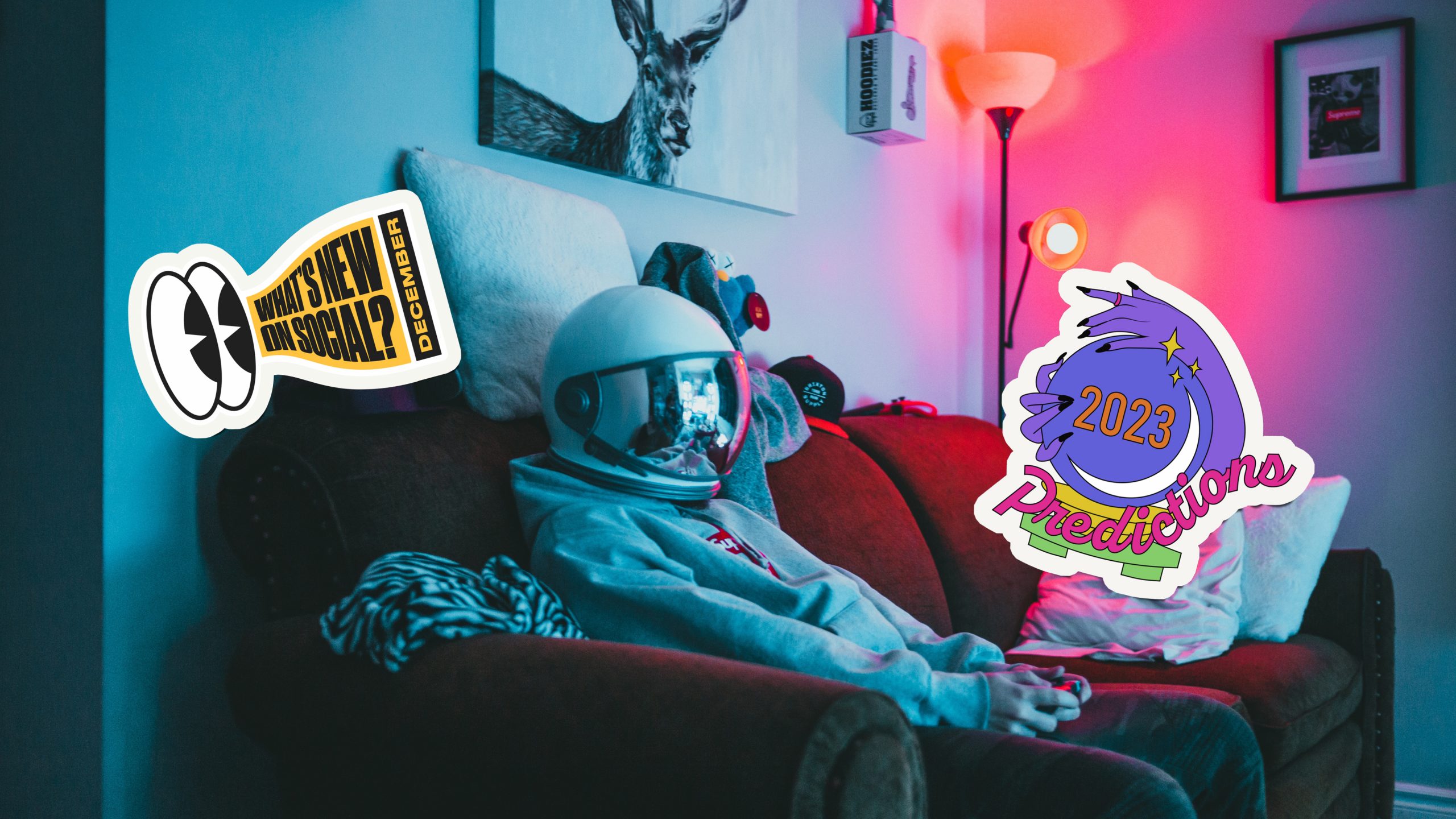Here’s to our final WNOS of 2022 – our monthly report where we update you on the latest news, trends and tips in Social & Digital, helping to keep you constantly in the know. For our last report of the year, we share 4 predictions for next year and crucially, what this will mean for brands. Merry Christmas! Until next year.
Prediction #01
There will be a big focus on social commerce in 2023
With an expected 5 billion social media users worldwide in 2023, the social commerce market is growing faster than traditional e-commerce, and it shows no signs of slowing down. Fuelled initially by a surge in popularity during COVID-19, the market is continuing to expand despite ebbs and flows in the pandemic.
We know that this year, social has had more of a role in the consumer journey. Firstly, it’s playing a greater role in discovery, with a recent Google study found that 40% of Gen Z use TikTok and Instagram for search – as well as compression in the time from trigger to conversion for low-impact purchases. The creator economy has also boomed, with many platforms looking for further ways to pay influencers. These online personalities have global reach and influence. It’s no surprise, therefore, that social media platforms see it as a profitable area.
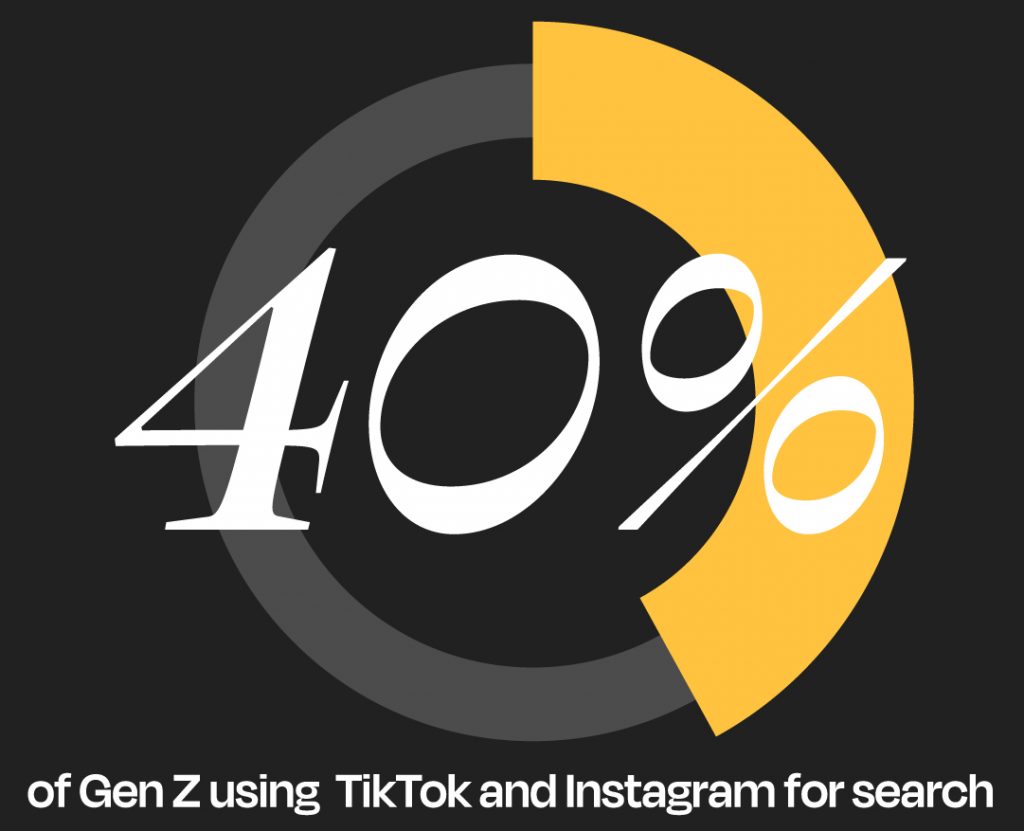
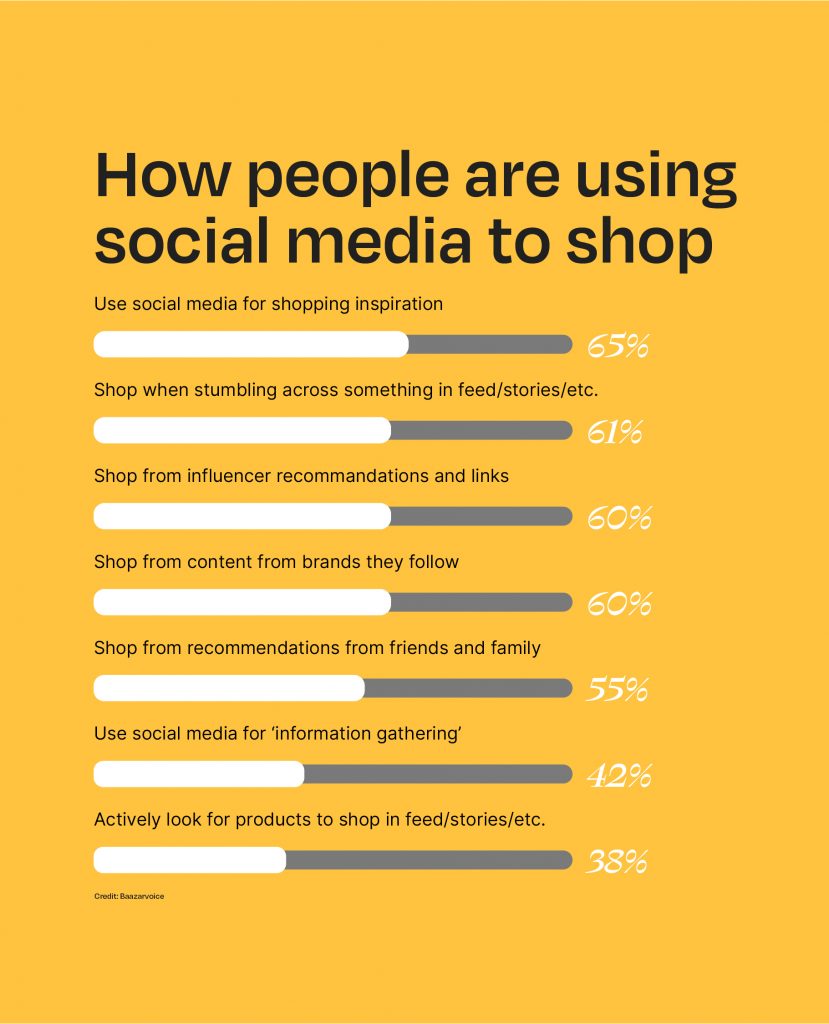
YouTube Shorts has announced shopping features, which came just days after TikTok announced their plans. Recently, TikTok began testing its long-anticipated Shop program, which lets users purchase products directly in the app. They are gearing up to build fulfilment centres with the company handling customer service, warehousing, and returns.
Easy or quick online checkout processes (34%) and social media “buy” buttons (21%) are common reasons Gen Z and millennials give for impulse buying. Brands that will find success with social commerce will offer seamless, convenient, and inspirational experiences.
Sources:
https://www2.deloitte.com/uk/en/insights/industry/technology/technology-media-and-telecom-predictions/2023/social-commerce-rise-of-the-social-shopping-retail-market.html
Gen Z Shopping 2022, State of Social Commerce
https://www.theverge.com/2022/11/15/23460596/youtube-shorts-shopping-affiliate-marketing-tiktok-ecommerce
https://www.insiderintelligence.com/content/uk-social-commerce-2022
https://www.thedrum.com/news/2022/09/21/which-social-platform-will-win-the-social-commerce-race
How to build profitable customer relationships using loyalty marketing, Meta & Group M report
https://www.socialmediatoday.com/news/new-study-looks-at-how-social-media-users-are-responding-to-ecommerce-integ/619860/
Prediction #02
Virtual and physical realities will continue to blend and co-exist with one another in 2023

Gorillaz AR concert at London’s Piccadilly Circus
Virtual and physical realities will continue to blend and co-exist with one another
in 2023.
Most everyday experiences are becoming a seamless mix of on-and-offline activities. By 2030, half of the respondents in Ericsson Consumer & IndustryLab’s recent report imagine the difference between physical and digital reality will be almost completely gone.
As consumers, we’re increasingly wanting (and expecting) our relationships and interactions with brands to be memorable and experiential. This means that brands that want to stay relevant will have to create customer journeys that are thoughtful and unforgettable. In 2023, the customer experience provided in-store should add unique value. It’s all about encouraging physical footfall alongside online shopping. Augmented reality (AR) and other immersive experiences will become key to achieving this. The rise in use of AR technology means consumer demand for immersive experiences will become even more mainstream in 2023. In fact, more than a third of Gen Z are predicted to be shopping with AR by 2025. Therefore, for 2023 and beyond, if a brand can’t deliver a convenient or memorable experience, they could risk customers going elsewhere. That means the companies that lead the competition won’t necessarily have the best or least expensive products—they’ll have the best experiences.
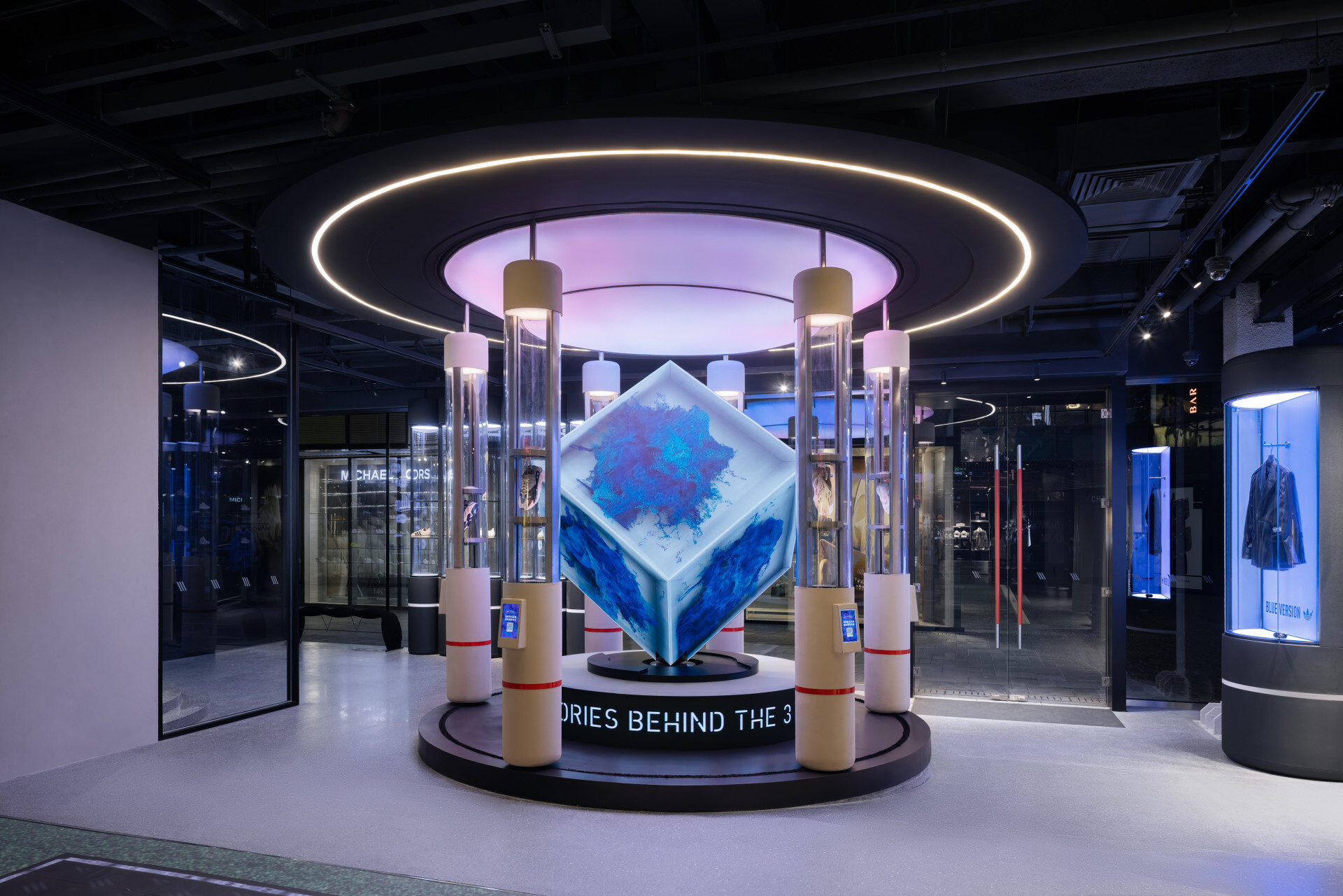
Adidas Sanlitun Flagship Store
Stores will also begin to change to experimental showrooms where customers can connect with brands in new ways. It will be less about making a purchase and more about experiencing the brand—touching products, seeing how they work, and then having them personalised and delivered.
Sources:
10 Hot Consumer Trends 2030, Ericsson Consumer & IndustryLab
https://www.thinkwithgoogle.com/intl/en-gb/consumer-insights/consumer-trends/digital-marketing-trends-2023/
https://www.nme.com/news/music/watch-gorillaz-play-augmented-reality-shows-in-london-and-new-york-3368603
https://www.designboom.com/architecture/adidas-beijing-store-immerses-shoppers-interactive-phygital-installations-ysp-12-18-2022/
Prediction #03
Consumers will continue to demand more transparency from brands – especially when it comes to sustainability.
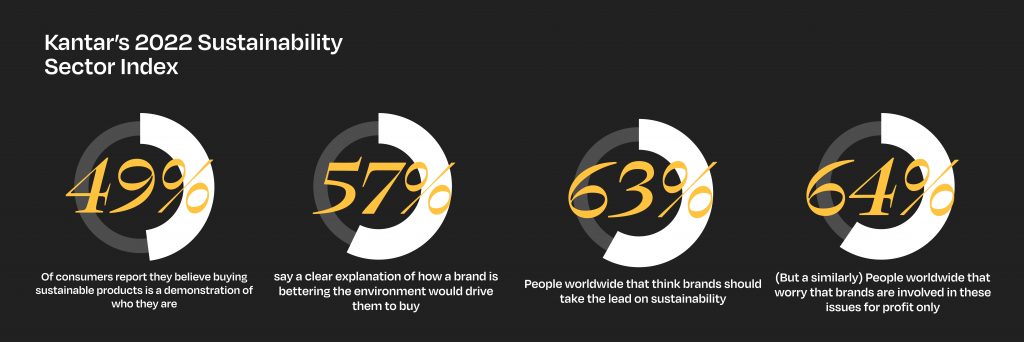

H&M’s ‘eco conscious label’ has faced scrutiny this year for greenwashing
As a result of growing customer interest in how products are manufactured, brands will strive to become more transparent. In Kantar’s 2022 Sustainability Sector Index, 49% of consumers report they believe buying sustainable products is a demonstration of who they are and 57% say a clear explanation of how a brand is bettering the environment would drive them to buy. Whilst in-store & physical retailers have only just begun to figure out how to make shopping greener (e.g plastic bag bans), brands next year will have to explore more ways to tap into the utility of technology to push sustainable shopping forward. Kantar research shows that 63% of people worldwide think brands should take the lead on sustainability, but a similar proportion (64%) worry that brands are involved in these issues for profit only. Because of this, brands will need to be hyper-vigilant about how they talk about their sustainability-related initiatives and achievements to ensure they are not “greenwashing,” which could lead to reputational damage.
This trend will also impact how consumers engage with products, especially fast fashion. In Instagram’s latest study, more than half of Gen Z respondents said they plan to DIY their clothes in 2023. Furthermore, when asked what they’d do when a clothing item is out of budget, over a quarter of Gen Z buyers turn to thrifting. Many will also look to shop ‘local’ – investing in home-grown innovators and brands that stamp their authenticity on the items they produce and sell.
To combat this, brands will have to consider investing in real innovations that address long-term challenges that consumers find important..
Sources:
Kantar’s 2022 Sustainability Sector Index
Kantar’s media trends 2023
https://www.forbes.com/sites/forbestechcouncil/2022/12/05/what-recent-trends-say-about-sustainable-shopping-in-2023/?sh=459c4e736fc0
Instagram Trend Report, 2023
The State of Fashion 2023: Resilience in the Face of Uncertainty, BOF
Prediction #04
The metaverse will continue to grow as a place for inclusion and self expression

Credit: GAP

Credit: NARS

Credit: Roblox
No “true” metaverse exists yet, but consumers and brands are exploring and experimenting in online gaming spaces like Roblox, Fortnite, and The Sandbox. Together, they’re helping us understand what the metaverse could eventually be.
A survey by Virtue suggests 70% of people admit they have bought something to create or enhance a digital identity, to express themselves or to own something unique. Just like in the physical world, the manifestation varies. Many believe digital fashion can create more equitable spaces and experiences for plus-size shoppers, those living with disabilities, and the LGBTQI+ community; in addition to enabling people to explore new modes of identity unrestrained by traditional roles, expectations and limits. One-third of respondents would purchase full outfits. Similarly, respondents to a survey in a 2021 report by the Institute of Digital Fashion and the Circular Fashion Summit shows a particular awareness of the underrepresentation of women, disabilities, and the LGBTQI+ community: 70% of survey respondents expressed that “gender representation within virtual experiences was vital to them”.
Early adopters in the metaverse are more likely to identify as male, white, heterosexual, from high-income households, and tech-driven – but people who prefer to spend their time online are a much more diverse group. Brands can help further the opportunities that social media first pioneered to unite communities online and build inclusive spaces.
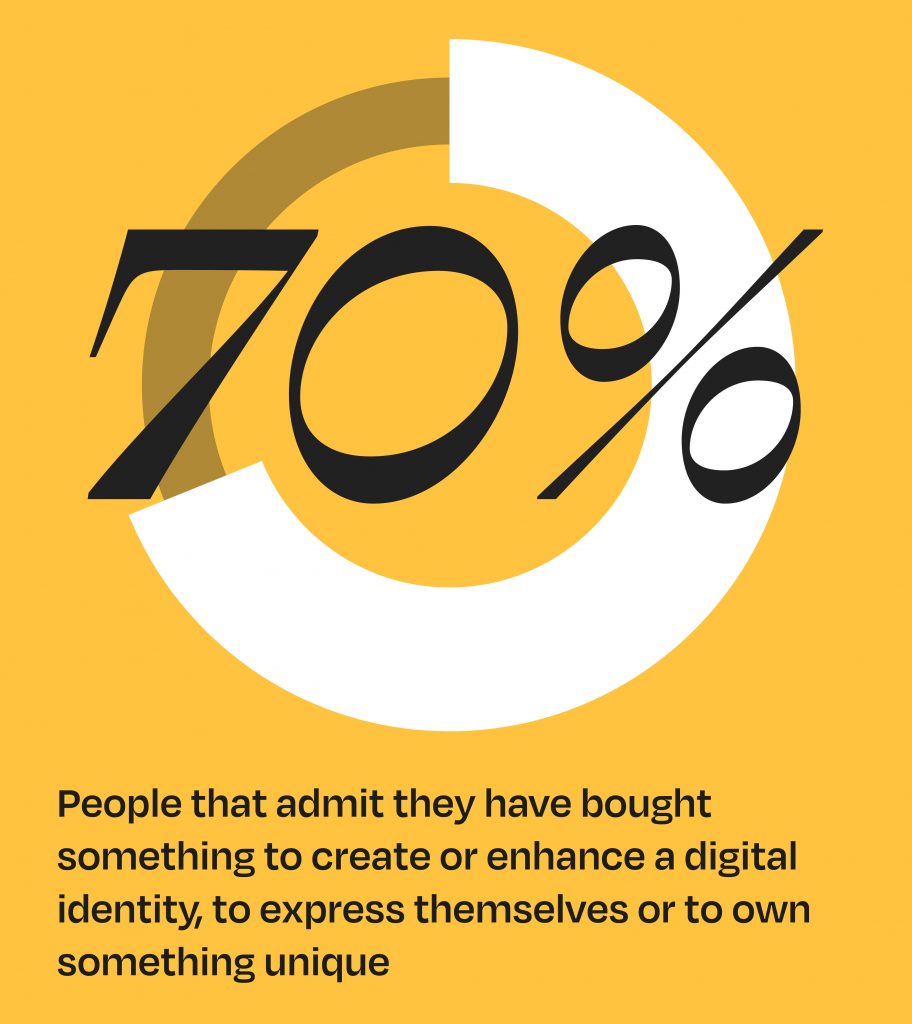
Most everyday experiences are becoming a seamless mix of on-and-offline activities. By 2030, half of the respondents in Ericsson Consumer & IndustryLab’s recent report imagine the difference between physical and digital reality will be almost completely gone.
As consumers, we’re increasingly wanting (and expecting) our relationships and interactions with brands to be memorable and experiential. This means that brands that want to stay relevant will have to create customer journeys that are thoughtful and unforgettable. In 2023, the customer experience provided in-store should add unique value. It’s all about encouraging physical footfall alongside online shopping. Augmented reality (AR) and other immersive experiences will become key to achieving this. The rise in use of AR technology means consumer demand for immersive experiences will become even more mainstream in 2023. In fact, more than a third of Gen Z are predicted to be shopping with AR by 2025. Therefore, for 2023 and beyond, if a brand can’t deliver a convenient or memorable experience, they could risk customers going elsewhere. That means the companies that lead the competition won’t necessarily have the best or least expensive products—they’ll have the best experiences.
Sources:
10 Hot Consumer Trends 2030, Ericsson Consumer & IndustryLab
https://www.thinkwithgoogle.com/intl/en-gb/consumer-insights/consumer-trends/digital-marketing-trends-2023/
https://www.nme.com/news/music/watch-gorillaz-play-augmented-reality-shows-in-london-and-new-york-3368603
https://www.designboom.com/architecture/adidas-beijing-store-immerses-shoppers-interactive-phygital-installations-ysp-12-18-2022/


